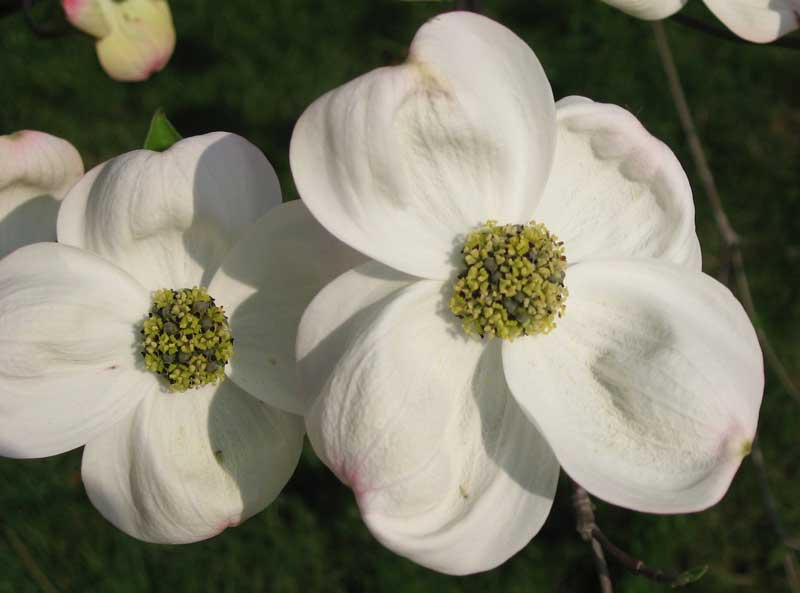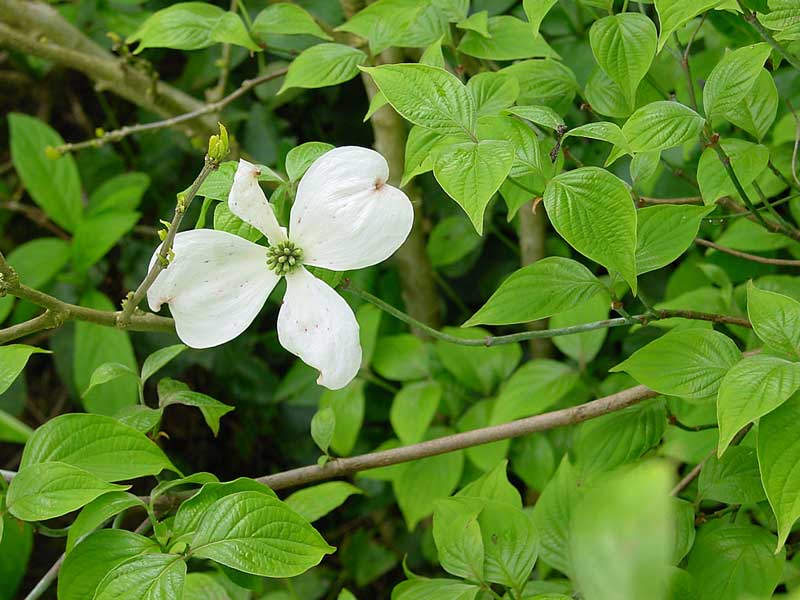If you are looking for an attractive ornamental tree, a tree that welcomes spring with a bountiful, dazzling, display of color, and a tree that shows off even in fall, consider the Flowering Dogwood. It’s a favorite choice for residential landscaping, parks and nature areas.
The Flowering Dogwood begins its display in early April. At this time, its unique onion-shaped buds begin to unfold, revealing its distinctive flowers. Under close inspection, you will observe that the actual flowers are very petite and cluster together in groups of twenty or more. This cluster is in turn surrounded by four large, brilliantly colored, white bracts that, to the layman, would be mistakenly referred to as petals. If you look closely at the tips of each bract you will see a characteristic notch which is sometimes surrounded by a crimson hallow.
There are domestic cultivars whose bracts produce pink to dark red colors. It’s no wonder this tree is a favorite pick for landscapers.
Flowering Dogwoods also display in fall. The richly colored leaves vary from yellow browns to reds to crimson. Fruits become obvious in fall and complement the rich foliage. They cluster in groups of up to ten and are small, oblong, and shiny red. The fruits are classified as drupes.
A wide variety of wildlife uses the flowering dogwood as a source of food and shelter. Birds, rabbits, mice, deer, and black bears are examples.
Flowering dogwoods have opposite leaves, just as maples, ashes, and Buckeyes. The leaves are oval with smooth edges and the tips can sometimes be long pointed. If you look carefully at the leaves, you will see sunken veins. In summer, the leaves are dull green on top and whitish on the underside.
Flowering Dogwoods are native to eastern North America. They appear to have adapted to a modest range of environments. They occur in the understory and along the edges of forested areas, and they can tolerate dry or moist soils.
They are not large trees but they may grow in excess of thirty feet. In silhouette, they may appear oval in shape being wider than taller.
The commercial tree industry does harvest Dogwood. It is a durable hardwood used for the manufacture of tool handles, hayforks, golf club heads, and knitting needles.
Additional References:


